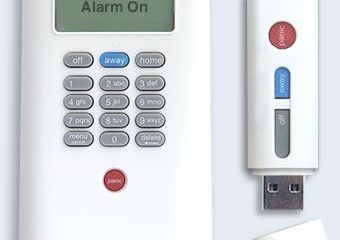Guides
Optimal 5GHz Wireless Camera Trending In The Market.

Some security cameras are compatible with 5 GHz Wi-Fi networks, allowing homes to take advantage of increased data transfer speeds, a more stable live video stream, and a better-quality surveillance feed than is possible with 2.4 GHz security cameras.
Many modern routers are equipped to handle both the 2.4 GHz and 5 GHz network bands, thanks to developments in Wi-Fi routers and security camera technology. If the security camera uses a compatible frequency or has dual-band capability, then it may be used with 5 GHz Wi-Fi.
For optimal performance, 5 GHz Wi-Fi should be used with only 5 GHz security cameras or those that support dual-band (2.4 GHz and 5 GHz) technology.
Less signal interference, increased download/upload speeds, and glitch-free video streaming are just a few of the many advantages users of such systems enjoy.
While some wireless router manufacturers are transitioning to 5 GHz technology, others are choosing dual-band options, such as Tenda, TP-Link, and Asus.
For additional information on wireless routers, including recommendations for the best router for your security camera, see our article, “Do I Need a Router for My Security Camera?”

Is There a Difference Between 2.4 GHz and 5 GHz for Security Cameras?
Unfortunately, not all surveillance cameras are compatible with 5 GHz Wi-Fi. Is it better to go with 2.4 GHz technology or 5 GHz for security cameras? The distinction between 2.4 GHz and 5 GHz is the key to understanding the answer to this issue.
2.4 GHz
Enhanced coverage thanks to a wider range. Cuts through solids Poor data transfer speed susceptible to signal disruptions
Since 2.4 GHz systems employ low-frequency radio waves, they can travel further distances and pass through obstacles such as walls and trees.
Developed in the 1980s, this technology is used in a wide variety of modern appliances, including microwaves, baby monitors, garage door openers, and remote-controlled toys.
https://www.smarthomelivinginsider.com/can-blink-camera-used-at-night/
Wireless signals to and from a security camera may be readily disrupted by other devices in the home using the same frequency band. There are 14 channels in the 2.4 GHz band (the Wi-Fi router may choose the least crowded channel to connect to), but the signal reliability decreases as more devices use it.
However, if the wireless security camera is located far from the Wi-Fi router, or if there are numerous obstacles in the way, a 2.4 GHz system is ideal.
5 GHz
Rapid transfer of information less vulnerable to noise in the signal Range is poor unless using the 802.11ac wife standard. Poor ability to break through barriers
A 5 GHz system is very quick compared to the slower 2.4 GHz technology. 802.11ax (2.4 Gbps), 802.11ac wave 2 (1.73 Gbps), 802.11ac wave 1 (866.7 Mbps), and 802.11n (450 Mbps) are only some of the cutting-edge wireless internet protocols used by this technology.
Since the technology wasn’t widely adopted until the turn of 2000, there are fewer products on the market that operate in that frequency range.
The weaknesses of the 5 GHz technology, such as poor penetration through solid objects and restricted range, are benefits of the 2.4 GHz system. However, a 5 GHz Wi-Fi router is ideal if the security camera is close and there are few barriers in the way.
What are the benefits of using 2.4 GHz for security cameras?

Due to its simple installation, the 2.4 GHz band is often used for security cameras. Because of this, homes and businesses may have their security systems installed farther away from the router, even if there are barriers in the way.
Do All 2.4 GHz Wireless Security Cameras Work?
Contrary to popular belief, Wi-Fi security cameras may use either the 2.4 GHz or 5 GHz frequency bands, with the latter needing more up-to-date wireless internet protocols.
https://youtu.be/tIps6ApNaHw?si=2g3DX8LmP1lX_I5B
Can I Convert a 2.4 GHz Camera to 5 GHz?

The mismatch of frequencies means that a 2.4 GHz security camera will not function on a 5 GHz wireless network.
Switching to 5 GHz networks is necessary because of forthcoming wireless protocol and technology changes. Technologies operating at 2.4 GHz, however, will continue to be useful.
More compatibility between the two networks is all that can be hoped for both homeowners and companies until 6G wireless technology arrives and hopefully fixes the problems with 2G and 5G.
The 5 GHz system eliminates the signal interference that many households see when utilizing 2.4 GHz technology, and it provides very fast data transfer rates. Here are four of the most well-regarded 5GHz Wi-Fi security cameras on the market today.
- Reolink E1 Pro’s
Priced at $59.99, the Reolink E1 Pro may be purchased from Amazon. A blue protective layer overlaid the lens of a Reolink E1 Pro. The design of the app has seen better days.
The Reolink E1 Pro’s dual-band features provide you enhanced Wi-Fi connection. It incorporates infrared technology and 1440p video quality, so you can see well even at 40 feet in the dark.
This 5G Wi-Fi-enabled interior security camera requires no professional installation and is very simple to use. The Reolink software eliminates the need for homeowners to constantly worry about the safety of their children, pets, and elderly relatives.
The optimum use for this camera is to have it permanently installed in one place. It is where it truly excels, making the lack of motion tracking in the pans seem a little gimmicky.
Considering that the E1 Outdoor, its outdoor cousin, has motion tracking, this seems like a strange move. However, the E1 Pro may be the best of the bunch if you’re looking for a premium ceiling surveyor at a reasonable price. – Full review of the Reolink E1 Pro can be found here.
- The Wired Pro Ring Floodlight Camera
The Floodlight Cam is just one of Ring’s many innovative home security devices. To maximize data transfer rates, this dual-band Wi-Fi security camera only captures at a normal 1080p resolution.
With full-colour night vision capabilities and the ability to interface with Amazon Sidewalk, Alexa, Fire TV, and Echo Show, it helps let families better integrate their smart homes.
The Ring Floodlight Cam Wired Pro is a no-frills home security camera with HD recording, infrared night vision, and an audible alarm to dissuade would-be burglars.
A well-thought-out piece of hardware that exceeds expectations with its vast range of smart technologies and app-driven capabilities.
- The Arlo Ultra 2
Can be purchased for $299.99 on Amazon. lack of protection from the elements.
This 8MP camera’s 4K resolution is just astounding. It may be hardwired into a home’s electrical system or operate on rechargeable batteries for up to six months before needing to be replaced when motion sensing is activated.
This wireless security camera, like many others, is compatible with a wide variety of Smart home platforms including Google Assistant, Samsung SmartThings, Amazon Alexa, and If This Then That. Users also like that they may save files to USB drives and Micro SD cards.
The Arlo Ultra 2 is the most sophisticated wireless camera I’ve examined so far, and it costs just a little more than the original while offering 4K recording quality and a far larger viewing area.
This device stands out from the competition due to its superior software and recording scheduling options. By David Ludlow, Author at Reliable Critiques.
- Foscam HT2
Can be Purchased from Amazon for $103.99. Made to be watertight and the Stability of connections improved by combining WPA, WPA2, and WEP. Using two separate audio sources and the maximum size of an SD card is 32 GB.
A dual-band wireless outdoor security camera with excellent night vision coverage is here and waiting for you. Wi-Fi security camera has night vision and can detect motion up to 165 feet away, with a magnification of up to four times.
Its AI is also cutting-edge; it is capable of sending alerts whenever it “sees” a person, animal, or vehicle. Faces are instantly brightened thanks to the high dynamic range. It fits well with Smart home installations because of its compatibility with Google Assistant and Alexa.
A voice-enabled camera is what you need. See what we recommend for Google fans and those interested in Alexa-enabled gadgets.
The exterior is composed of metal, and the mounting hardware and accessories are high quality and well thought out. Unfortunately, not many cameras currently on the market have 5GHz wifi compatibility.
Works with Blue Iris through ONVIF (great!) and doesn’t need a mobile app for setup, but only after a series of awkward and poorly defined procedures. On Amazon, by Keith F. Kelly.
How fast of a Wi-Fi connection do security cameras require?
Assuming 1080p resolution, 6-10 frames per second, and H.264 codec, the typical wireless security camera needs 1 to 2 Mbps of data transfer speed.
However, “steady-state” security cameras use anything from 5 Kbps to 50 Kbps of bandwidth. Wi-Fi with a minimum of 10 Mbps upload and 20 Mbps download speeds are required because of the high density of internet-connected devices in the same area.
What is the difference between 2.4 and 5 GHz in terms of how well they go through walls?
Contrarily, Wi-Fi signals at 2.4 GHz go further through walls than those at 5 GHz. However, a 5 GHz system is superior to a 2.4 GHz system in terms of its ability to suppress signal interferences.
How common are 5 GHz security cameras?
Several popular security cameras, such as the Reolink E1 Pro, Ring Floodlight Cam Wired Pro, Arlo Ultra 2, and Foscam HT2, have just upgraded to 5 GHz, the vast majority of these gadgets support both the 2.4 GHz and 5 GHz bands.
So why is 2.4 GHz the average?
The 2.4 GHz frequency band has been in use since the 1980s and is thus more established.
As a result, it may be found in a wide variety of appliances and technological advancements, including but not limited to microwave ovens, radio-controlled models, garage door openers, auto alarms, baby monitors, and wireless microphones.
Conclusion
Wi-Fi security cameras may use this frequency range if their bandwidths are the same. Although 5 GHz technologies are beginning to dominate older systems, 2.4 GHz systems should not be ignored by homes or businesses.
Although 2.4 GHz systems are becoming more out of date, they still have certain applications. To counter this, 5 GHz Wi-Fi is becoming more popular as a means to relay live video surveillance footage more quickly and reliably.
-

 Gadgets1 year ago
Gadgets1 year agoDoes Nest Thermostats Contain Cameras Or Microphones? Is It Safe For you?
-

 Gadgets1 year ago
Gadgets1 year agoWhat Is The Purpose Of Red Button On The SimpliSafe Keypad?
-

 Solutions2 years ago
Solutions2 years agoHow to Connect Your Vizio TV to WiFi Easily Without a Remote?
-

 Solutions2 years ago
Solutions2 years agoWhy is My Samsung TV Picture So Dark? Exploring the Possible Causes
-

 Accessories2 years ago
Accessories2 years agoCan A Hdmi Splitter Extend The Display To 2 Monitors?
-

 Accessories2 years ago
Accessories2 years agoDo Smart Thermostats Run On Batteries? Let’s Find Out
-

 Gadgets2 years ago
Gadgets2 years agoFitbit Symbols Meaning: What Do The Fitbit Icons Mean?
-

 Solutions2 years ago
Solutions2 years agoWhy Can’t I Stream Netflix From My Phone? | Solution




